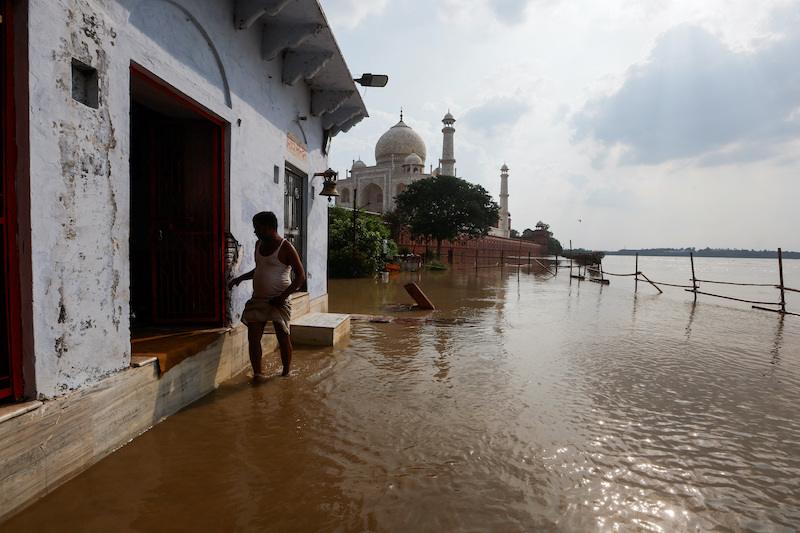As floodwaters from the swollen Yamuna River lap at the outer walls of India’s most famous building, the exquisite white-marble Taj Mahal, for the first time in 45 years, Indians are beginning to question both the Modi government’s disaster management and its lethargic response to global warming, according to a report by Nikkei, which said heavy monsoon rains have wreaked havoc, displacing tens of thousands, causing roads to cave in, homes to collapse, and killing scores in the country’s north.
An early estimate of flood damage in the north by State Bank of India has put economic losses at nearly $2 billion, the report said, while conservationists and urban planners say the country needs to do better to protect people and infrastructure from extreme weather events caused by global warming, given they are becoming “the new normal”. Climate change, it said, “receives relatively little attention from most Indian politicians and has yet to become a major poll issue in the run-up to the 2024 general elections.”
Read the full report: Nikkei Asia.
ALSO SEE:
Indian Banks Wary About Official Push for More Coal Mines
India to Close About 30 Coal Mines in Next Few Years – ToI
India, China Pushing For ‘Multiple Pathways’ to Net Zero
India Plans to Enforce Emergency Law to Ramp Up Coal Usage
India Burns Even More Coal Despite Climate Pledge Pressures
























